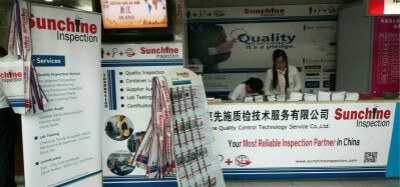Founded in 2005, Sunchine Inspection is one branch of Sunchine International; a Hong Kong based multinational company specializing in export-import consulting and quality management. Today, with two offices in China mainland and one office in Europe, Sunchine Inspection has become one of the best third party inspection companies in China, serving over 1,500 regular clients in various fields from all the Continents in the world.


The Detroit Free Press just published a good article, Robots descending on Michigan industrial workplaces in record numbers, that describes what happens in the US but has a lot of significance
BY RENAUD ANJORAN
The immediate future is likely to be a combination of human workers amid automation and not a “lights out” factory devoid of people entirely.
Very true. General Motors fantasized about ‘lights out factories’ in the 1980s and failed miserably. It is not the right “True North” to have in mind.
[Robots are put in place for] focus on tasks that are “dirty, dull and dangerous”
Very true. General Motors fantasized about ‘lights out factories’ in the 1980s and failed miserably. It is not the right “True North” to have in mind.
[Robots are put in place for] focus on tasks that are “dirty, dull and dangerous”
http://4inspection-certificate.jigsy.comhttp://quality-control5.jigsy.comhttp://factoryinspectionservice.jigsy.comhttp://quality-control5.jigsy.comhttp://inspection4service.jigsy.comhttp://fabricinspection.jigsy.comhttp://fabric54inspection.jigsy.comhttp://inspection4service.jigsy.comhttp://electric-inspection4.jigsy.comhttp://fabric54inspection.jigsy.comhttp://electric-inspection4.jigsy.comhttp://containerloadsoffurniture.jigsy.comhttp://supplier-first-assessment3.jigsy.com
Yes! These are the tasks to automate in priority. Other tasks are usually best done by humans, aided by smart semi-automation, by mistake-proofing systems, etc. In some cases it is better to go to full automation, but that cost-benefit analysis should only be done after all the low-tech improvements have been made.
New robots come with “eyes” designed to allow them to scan parts for defects.
Vision systems have been used for 30 years and the hardware is now inexpensive (for most applicable, at least). These systems are a must for robots to recognize and pick the right parts, to recognize defects and put them aside, and so on.
Reduced regulations allow factories to drop some of the protective cages that once encased robots and kept them far from human workers. Now, some co-bots can work alongside assembly line workers, armed with motion-sensor technology and warning lights that make them slow down or even stop moving when a human gets too close.
This allows for the gradual replacement of low-skill assembly jobs by automated systems. Let’s face it, young generations prefer other types of jobs.
Yes! These are the tasks to automate in priority. Other tasks are usually best done by humans, aided by smart semi-automation, by mistake-proofing systems, etc. In some cases it is better to go to full automation, but that cost-benefit analysis should only be done after all the low-tech improvements have been made.
New robots come with “eyes” designed to allow them to scan parts for defects.
Vision systems have been used for 30 years and the hardware is now inexpensive (for most applicable, at least). These systems are a must for robots to recognize and pick the right parts, to recognize defects and put them aside, and so on.
Reduced regulations allow factories to drop some of the protective cages that once encased robots and kept them far from human workers. Now, some co-bots can work alongside assembly line workers, armed with motion-sensor technology and warning lights that make them slow down or even stop moving when a human gets too close.
This allows for the gradual replacement of low-skill assembly jobs by automated systems. Let’s face it, young generations prefer other types of jobs.
Last week I wrote an article about the right approach to production automation in this article: How To Get Your Manufacturing Automation Timeline Right. I introduced the 5 levels of automation and “the great divide” between steps 3 and 4.
What do you think?
www.tagged.com/electricinspection
www.tagged.com/chemicals6inspection
www.tagged.com/commodities44inspection
www.tagged.com/certificate5quality
www.tagged.com/chinaagent22
www.tagged.com/audit5service
www.tagged.com/verification444services
www.tagged.com/glass3inspection
www.tagged.com/garment3quality
www.tagged.com/chemicals6inspection
www.tagged.com/commodities44inspection
www.tagged.com/certificate5quality
www.tagged.com/chinaagent22
www.tagged.com/audit5service
www.tagged.com/verification444services
www.tagged.com/glass3inspection
www.tagged.com/garment3quality

没有评论:
发表评论